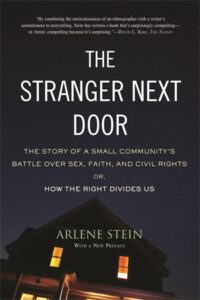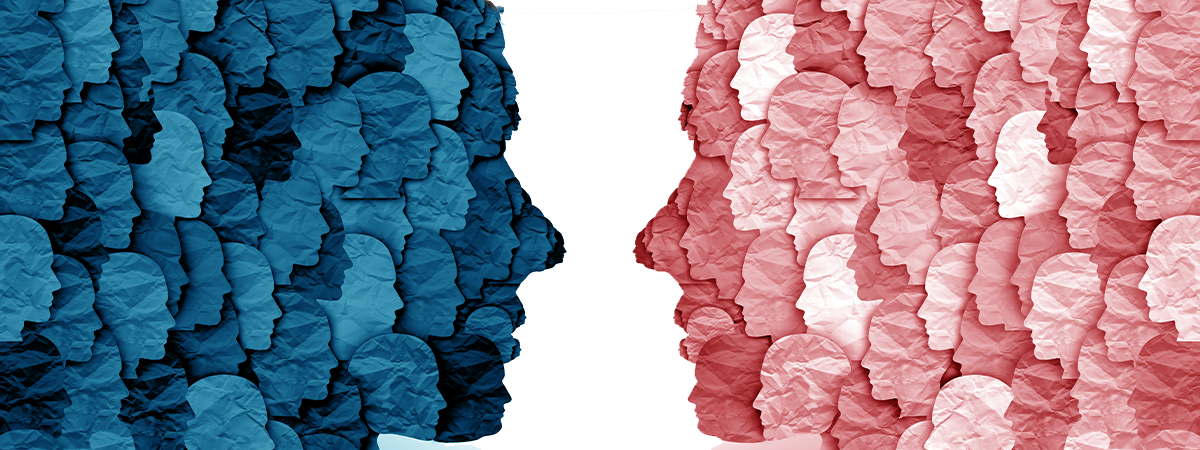Long before Donald Trump occupied the White House, small communities across the Pacific northwest became laboratories for populist campaigns that exploited people’s fears and turned neighbors against one another. I’ll never forget Penny, a white single mother who told me that she resented those who used food stamps to buy avocados. “I can’t afford avocados,” she lamented, “but they’re buying them like there’s no tomorrow.” Her resentments spilled over in different directions, directed toward immigrants, people of color, uppity city slickers, and anyone else who seemed, to her at least, to work less but have more than she and her family did.
Globalization and automation had shaken the region’s timber-based economy, reverberating in small, central Oregon communities like cottage Grove (which I called Timbertown), where Penny lived. She had lost her job as a nursing assistant, and when her unemployment benefits ran out, she had few other options.
During the post-Reagan years of the late 1980s and early ’90s, fewer and fewer working- and middle-class Americans could rely upon the government to protect them from economic dislocation. Convinced that the real problem was the decline of traditional values, a small but sizable minority of them became active in battles around abortion, gay and lesbian rights, and sex education. America, some analysts suggested, was in the midst of a war over “our most fundamental and cherished assumptions about how to order our lives.”
These were the battles that came to be known as the “culture wars.” Right-wing activists cast sexual minorities as immoral individuals who went against God, challenged the “natural” dichotomy of the sexes and the authority of fathers, and exerted an outsize influence. Conservatives charged gays and lesbians with manipulating public officials, including teachers, to carry out their “agenda,” and they tried to amend the state constitution to prevent anti-discrimination protections. These battles for so-called “family values” pictured women as producers of the nation whose role was to maintain traditional households, raise children, and support their breadwinner husbands.
Convinced that the real problem was the decline of traditional values, a small but sizable minority of them became active in battles around abortion, gay and lesbian rights, and sex education.In the mid-1990s, I followed Timbertown’s battle over gay and lesbian rights to understand what was at stake in the conflict. There, I met a number of true believers who were activists for the cause, mainly politicized Christian evangelicals whose numbers were rapidly growing. The vast majority of people in the community, however, were those, like Penny, who were scrambling to simply find a way to feed their children.
Though skeptical about whether rolling back LGBT rights would do a whole lot to make their lives better, they were willing to see if it might. Penny and others took for granted the idea that government was not on their side and was never going to be. As they saw it, if working people were perpetually forced to struggle, with no one to swoop in and save them, they wanted to be damn sure their hard-earned money didn’t go to subsidize the profligate lifestyles of others.
The local campaigns against gay and lesbian rights were ultimately defeated. During the 1990s and early 2000s, attitudes toward homosexuality shifted dramatically. In 1973, 70 percent of people felt same-sex relations are “always wrong.” By 2000, however, that number dropped to 54 percent and by 2010 was down to 43.5 percent. When the US Supreme Court struck down all state bans on same-sex marriage in 2015, some declared that the culture wars were dead. But such pronouncements were premature.
Trump swept into politics articulating many of the resentments I had heard two decades earlier in small towns in the West. The billionaire reality-show star spoke of national decline, promising to “drain the swamp” and “make America great again,” using language that was tailor-made for an anxious minority of voters who felt dispossessed, left behind. On behalf of “the people,” he promised a return to a time when white Christian male dominance seemed more secure. And in the name of protecting the nation, he targeted immigrants, feminists, and LGBT people. Transgender people became a particular focus of popular ire.
*
By the new millennium, trans Americans had become more visible and more numerous. They had come to enjoy greater access than prior generations to language and concepts that made the idea of modifying their bodies more imaginable. Trans activists, drawing upon the work of feminists and sexologists, located gender in the mind rather than in the body, defining it as an “inner essence of which each individual is the sole legitimate interpreter.” And they fought to enable people to adopt language, occupy spaces, and modify their bodies in ways that conformed to their gender identities.
In many respects, activists’ efforts proved remarkably successful. Under President Obama, Medicare lifted its ban on covering gender surgeries, and federal employees’ insurance plans quickly followed suit. The Affordable Care Act prohibited discrimination based on gender identity and led the way for a number of states to begin covering gender-transition-related care. Trans activists also won the ability to change gender on passports and the right to use bathrooms consistent with their gender identity, rather than the gender they were assigned at birth.
Within the first five months of 2021, in a backlash against the progressive policies of the late 1990s and early 2000s, conservatives pushed more than 250 anti-LGBTQ bills into state legislatures around the country.The right fought back, first with “bathroom bills” that would prevent trans people from using public bathrooms that align with their gender identity. They focused on the supposed threat posed by trans-feminine people to cisgender women and girls, raising the specter of sexual assault. To guard against threats by boys and men “masquerading” as female, these campaigns sought to re-essentialize sex/gender by compelling those who are assigned the sex of male at birth to use men’s bathrooms. Though most of these efforts failed, President Trump signed an executive order rescinding federal protections for transgender students that had allowed them to use bathrooms corresponding with their gender identity, reversing Obama-era policies.
It is notable that on the first day of his administration, President Biden directed all federal agencies that enforce federal laws prohibiting sex discrimination to also prohibit discrimination based on sexual orientation and gender identity. He recognized that “transgender Black Americans face unconscionably high levels of workplace discrimination, homelessness, and violence, including fatal violence,” and sought to permit trans students to participate in school sports in ways that accord with their gender identities.
And then, within the first five months of 2021, in a backlash against the progressive policies of the late 1990s and early 2000s, conservatives pushed more than 250 anti-LGBTQ bills into state legislatures around the country, the majority of which targeted trans, nonbinary, and gender-expansive youth. The culture wars were back—with a vengeance.
*
Christian conservatives have long positioned themselves as saviors of “the family” against state governments and local school boards that advocate the teaching of sex education, “secular humanism,” and evolution. While traditionalist notions of gender underpin such efforts, the fight has now turned to the very notion of gender, which the right casts as “gender ideology.” Affirming essentialist understandings of sex, religious conservatives charge that feminist and queer notions of gender threaten the natural social order, promote homosexuality, and induce gender confusion.
“At younger ages than ever before, American children are being targeted by the left with sexual content and destructive gender ideology. Biological differences between the sexes are integral to the personhood and health of all children. A child’s best chance at a happy and healthy life is one free from sexual politics, one in which kids can be kids.” Thus warned a group calling itself the Promise to America’s children, sponsored by the Heritage Foundation, a leading right-wing organization. Promise to America’s children used secular arguments to assert that efforts to question the essential nature of gender and sexuality are unscientific and dangerous to public health.
The rhetoric of “saving children” has long been central to the religious right playbook, especially in the fight against abortion rights and LGBT rights. By the second decade of the twenty-first century, this language shifted, charging that women and girls are the unwitting, non-consenting victims of trans ideology. By gesturing toward feminism, and at times even making common cause with some feminists, these efforts to defend women and girls against a supposed transgender threat represented a new twist. Right-wing activists asserted that trans women threaten cis women by infringing on women’s spaces, making them unsafe, erasing women’s sex-based rights, taking opportunities away from women, and recruiting young cis girls into transness.
The culture wars have never been simply about fighting gay and lesbian rights or women’s rights, and they are not simply about fighting trans rights today.After fighting to defend men’s sports and minimize the reach of Title IX, Republican lawmakers suddenly became obsessed with “saving women’s sports,” introducing over one hundred bills in more than thirty states that would limit trans children’s access to sports teams. They argued that transgender athletes have an unfair advantage in girls’ and women’s sports, though they presented no convincing evidence to that effect. In 2019, as national right-wing organizations began efforts to ban trans women and girls from women’s sports and to block or otherwise criminalize healthcare for trans young people, activists charged that “these policies destroy opportunities for female athletes and deprived children of privacy and safety.”
Opposition to “gender ideology” also informed efforts to restrict gender-affirmative medical care for young people on the grounds that the very notion of transgender children is a dangerous myth constructed by those who would seek to “convert” masculine cis-gender girls especially. Echoing early panics around homosexual “contagion,” some critics warned of an “epidemic” of “rapid onset gender dysphoria” that was misleading young women into thinking they were “really” men, causing them to mutilate their bodies and become sterile. They claimed that transgender is a fad, a “craze” sweeping America’s youth. It was a short jump from such assertions to the claim that gender-affirmative healthcare, typically through pubertal suppression or affirming hormone therapy, is a form of child abuse, which is precisely what a Texas bill argued. Clearly, transgender rights had become the new face of the culture wars around gender and sexuality.
Yet the culture wars have never been simply about fighting gay and lesbian rights or women’s rights, and they are not simply about fighting trans rights today. Gay and lesbian people constitute less than 10 percent of the population; trans people make up less than 1 percent. Some observers suggest that struggles against gender have emerged as the “symbolic glue” for a spectrum of authoritarian and ethno-nationalist forces. The battles against gay and lesbian rights in the 1990s and against transgender rights today seek to consolidate power on the right and undermine democracy.
*
When white evangelicals saw themselves as the dominant force defining mainstream American morality and values, they worried that sexual minorities, feminists, liberals, and people of color were challenging their hegemony. Now these fears have amplified as the share of the US population identifying as evangelical dropped from 23 percent in 2006 to 15 percent in 2020. As they have come to acknowledge that they are just another subculture, rather than the core American constituency, conservative Christians have become more defensive and more aligned with racist social movements.
Until recently, few evangelical Christians would openly admit that their collective goals include preserving white dominance. Their belief that white christians are morally superior and therefore deserve greater power was so widely understood that it did not need to be openly articulated. What’s more, societal norms prevented openly racist talk. But in the new millennium, race became an even more central and explicit component of the right-wing project, influenced by a burgeoning alt-right movement. It is important not only that Christian values be preserved, this emboldened right believes, but also whiteness.
The battles against gay and lesbian rights in the 1990s and against transgender rights today seek to consolidate power on the right and undermine democracy.White nationalists have long been obsessed with fears of “white genocide,” the imagined biological extinction of the white race, which they attribute to immigration growth among Black and brown people, as well as to gender and sexual liberalism, which has depressed white birth rates, they claimed. They charge that Jews, especially Jewish elites in education and government, play a pivotal role in orchestrating this existential threat. The growing influence of the alt-right, propelled in large part by social media, has meant that racist ideas such as these, which “previously lurked in the shadows of the unspeakable,” as historian Alexandra Minna stern writes, “have migrated into everyday discourse, becoming imaginable and utterable.” As president, Donald Trump made voicing such ideas more permissible.
This helped set the stage for contemporary battles against critical race theory, a body of scholarship that argues that white supremacy of the past lives on in the laws and societal rules of the present. Charging that elites are “seeking to reengineer the foundation of human psychology and social institutions through the new politics of race,” right-wing populists say that critical race and gender theories represent worldviews that threaten “the people.”
It is true that critical gender and race theories show us that hierarchies of race and gender are not natural; they are human-made social arrangements. They tell us, writes feminist sociologist sabine Hark, that “things do not have to stay as they are.” Knowledge can indeed set one free, or at least shake up settled notions of how one should live. Those who oppose the circulation of critical forms of knowledge are threatened by the possibility that individuals can use these ideas to decide to live openly as transgender or to acknowledge the long arc of racial inequality and its persistence.
It is important not only that Christian values be preserved, this emboldened right believes, but also whiteness.The right-wing campaign Promise to America’s children offered the following analogy between the teaching of Black studies and queer studies: “After 1964, federal courts ordered public schools to teach black history to remedy discrimination against African Americans. In like fashion, federal courts could also order schools to teach the sexual orientation and gender identity curricula.” Animating these struggles is the figure of the innocent, vulnerable child who is the unwitting victim of liberal indoctrination and symbolizes national and, at times, racial purity.
The culture wars of the 1990s, much like the battles over gender and race today, were proxy battles about who we are as a nation, whose lives are considered valuable, and how we determine and allocate resources to protect those lives. Culture wars frequently take the form of “moral panics” that incite fear and anger to deflect attention from the real problems that collectively face us. “When politicians rant about values, or attack other people’s personal choices,” writes economist and commentator Paul Krugman, “it’s usually a sign that they’re unable or unwilling to propose policies that would actually improve American lives.” It should therefore come as little surprise that one of the prime movers behind anti-trans activism at the national level is the Heritage Foundation, which is also bankrolling efforts to undermine voting rights.
Though I have lost touch with Penny, I sometimes think of her and what her life might be like now, twenty years after we first met. She’s probably still struggling, I imagine. The inequalities that fed white working- and middle-class anxieties in the 1990s have only become more vicious, and the COVID-19 pandemic has created new forms of uncertainty. The forces of reaction are also better mobilized, thanks in part to the rise of social media. Residents of small communities such as those documented in this book report that the cultural polarization of the past now regularly emerges as open combat, with rage turning into acts of violence. Students expressing solidarity with Black Lives Matter have been harassed. White power advocates have attempted to take over local community events, such as an annual parade commemorating cottage Grove’s mining history.
Fortunately, many of the grassroots groups that cropped up to defend human rights during the 1990s’ campaigns against gay and lesbian rights are still going strong, working actively to counter the rise of hate groups. Across the region, communities are mobilizing to counter bigotry with messages of inclusion and equality. They are defending immigrants, sexual minorities, and racial minorities against attack. It will take local efforts such as these, along with global mass social movements committed to equality and democracy, to counter the corrosive influence of movements born of resentment.
______________________________

From The Stranger Next Door by Arlene Stein, available from Beacon Press


